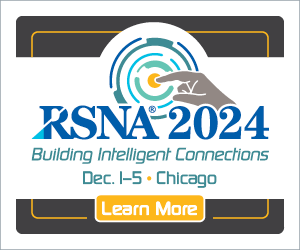|
E-Newsletter • September 2024 |
Novel Technique Offers Faster Neuroblastoma Detection in Children
A new molecular imaging technique that pairs a novel tracer with a next-generation PET/CT scanner can identify neuroblastoma in children with high sensitivity, requiring a scan time of only minutes and no sedation or anesthesia. With its ability to accurately diagnose neuroblastoma, this technique, known as 18F-MFBG LAFOV PET/CT, has the potential to impact therapeutic decision making for children with this disease. This research was published in the August issue of The Journal of Nuclear Medicine.
▼ ADVERTISEMENT

Neuroblastoma is the most common extracranial solid tumor in children, with an overall survival of 70%. For decades, 123I-MIBG SPECT/CT has been the standard of care for initial staging and response assessment. It is frequently used for follow up of neuroblastoma, as well. The 123I-MIBG SPECT/CT scanning procedure is a two-day protocol. Sedation or general anesthesia is frequently used because the patients are predominantly infants and scan times are often more than two hours.
“For young children undergoing molecular imaging, less exposure to radiation and the avoidance of sedation or general anesthesia is very important,” says Lise Borgwardt, MD, PhD, senior consultant in pediatric nuclear medicine at Copenhagen University Hospital-Rigshospitalet, in Copenhagen, Denmark. “In our study, we used the tracer 18F-MFBG, which requires only a one-day protocol, at the long-axial-field-of-view (LAFOV) PET/CT scanner, which has a sensitivity about 10 times higher than a digital PET/CT scanner. We then compared this technique with 123I-MIBG SPECT/CT to determine its diagnostic value and feasibility.”
▼ ADVERTISEMENT
 |
3D Modeling Reduces Prostate Cancer Surgery Complications
Researchers from King’s College London and several other notable institutions have found that developing 3D models of patient anatomy reduces complications during prostate cancer surgery.
Researchers Visualize Love’s Impact on the Brain
Using functional MRI, researchers from Aalto University were able to measure and visualize the brain activity of subjects who were shown various stories about love. Their research was published in Cerebral Cortex Journal.
New AI Algorithm Improves ‘Mammogram Density Assessment’
MV-DEFEAT, a novel AI algorithm designed by researchers at the University of Eastern Finland, shows promise in aiding the assessment of dense breast tissue and, in turn, detecting breast cancer. Their research is available in IEEE Access.
▼ ADVERTISEMENT
 |
“Our group and others have previously shown that AI tools are capable of excluding pathology in chest X-rays with high confidence and thereby provide an autonomous normal report without a human in the loop. … This finding is also generally interesting in this era of AI capabilities covering multiple high-stakes environments not only limited to health care.”
— Louis Lind Plesner, MD, from the department of radiology at Herlev and Gentofte Hospital in Copenhagen, Denmark, and lead author of a study regarding an AI tool with demonstrated effectiveness at “excluding pathology” on chest X-rays |
|
|
COVER STORY
Look Again?
Those in the radiology field are considering whether radiology second opinion services, despite their surging popularity, are worthwhile.
FEATURE
The Depths of the Heart
Emerging technologies can provide radiologists with more insight than standard coronary CT into coronary conditions, allowing them to treat disease more effectively.
|
|
|
| Advertising Opportunities |
Have a product or service you want to market to radiology professionals? Utilize the reach of Radiology Today Magazine to accomplish your marketing goals. Email our experienced account executives today at sales@gvpub.com or call 800-278-4400 for more information.
|
| © 2024 Radiology Today Magazine |
|
|